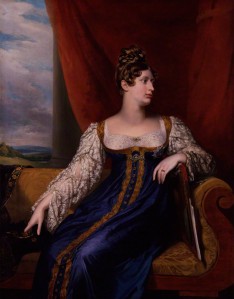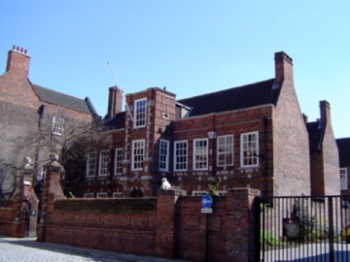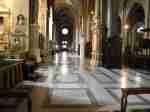So now it seems that the exploitative former teacher, Jeremy Forrest, plans to marry the schoolgirl he abducted, once he has served his sentence, and that has the approval of the poor child’s hitherto absentee father. There is an eighteenth-century parallel to this distressing story that I tell in both my Hannah More and my Wilberforce books. It concerns the Bristol schoolteacher, Selina Mills, her pupil, the teenage heiress, Clementina Clerke, and an unscrupulous surgeon, Richard Vining Perry. The full references to the quotations are found in my books.
At the beginning of 1790 the twenty-three year-old Selina Mills and her younger sister, Mary, took over the More sisters’ popular and successful school in Park Street, Bristol. Selina was the daughter of Thomas Mills, a Bristol bookseller, who was also a member of the Society of Friends, though she and her sisters remained in the Church of England. Thomas Mills was rising in the world but he was not wealthy enough to provide an independent income for his daughters. Teaching was the only possible career for genteel, educated young women and the Mills daughters were fortunate to have in the Mores the supreme role model of how a family of sisters could benefit from the expanding demand for girls’ schools.
On the night of 20 March 1791 the school was thrown into a panic; it had lost a pupil and was about to become the centre of a national scandal.
The story gripped public attention because it read like the plot of so many novels of the period. It had a youthful heroine in the person of Clementina Clerke, aged fourteen years and eleven months, the heiress to a fabulous West Indian (and therefore slave-derived) fortune (more than £10,000 per annum according to the newspapers); and it had a dashing and plausible anti-hero, a Bristol surgeon, Richard Vining Perry, who came out of the same reckless, unscrupulous mould as Samuel Richardson’s Lovelace and Jane Austen’s Wickham. But there was another possible plot, one familiar to readers of the novel of sentiment, which was to be brilliantly exploited by Perry’s defence council. According to this narrative, as a blameless young man he just happened to see Clementina on her walks with her schoolfellows;
‘their eyes met in attraction and with a kind of electric fire shook them to their souls’.
It was irresistible love, therefore, and not cold avarice that motivated the susceptible heart of the gallant surgeon.
With the connivance of a servant at the school, the pair began a clandestine correspondence and planned their elopement. This took place on 18 March when a convincing looking servant, wearing livery and driving a chaise, delivered a letter to Selina Mills, purporting to come from Clementina’s guardian and requesting that she go to see him immediately. The unsuspecting Selina and her sister Mary saw her into the carriage and within a short time she and Perry were in a fast chaise and four heading north for the famous blacksmith’s shop at Gretna Green, where the relaxed Scots law allowed for the marriage of girls over the age of twelve without requiring parental consent.
By the end of the day, when Clementina had failed to return, the story of the elopement came out. Overwhelmed with guilt and terror Mary Mills and her brother set out in pursuit, guessing correctly that the couple must have gone to Gretna. They managed to encounter them in Cumberland, driving in the opposite direction, as the pair headed south on their way to London. As the coaches slowed down in order to negotiate the narrow road, Mary Mills recognized her pupil in the other carriage and called out,
‘Miss Clerke, for God’s sake, Miss Clerke, let me speak to you!’
At this Perry put his head out of the window and told her that Miss Clerke was not there – she was now Mrs Perry. He shouted at the coachmen to drive on, leaving Mary and her brother helpless, forced to trundle northwards until they could find a safe turning place.
The pursuit then moved to London where a reward of £1000 was offered for Clementina’s return. Hannah More made frantic enquiries among the thief-takers of the capital, tramping around lodging houses in search of the couple, all the time in dread of Perry, who was reputedly armed at all times with a loaded pistol. In order to escape from the law, Clementina disguised herself as a boy and the couple fled abroad to what was then the Austrian Netherlands. Mary and James Mills caught up with them in Ghent and tried to persuade the magistrates to close the town gates to prevent their escape. But lacking authorization from Clementina’s mother, who plays an ambiguous role in this story, the authorities were unable to act. Brother and sister returned home empty-handed.
For copyright reasons, I can’t reproduce the two caricatures in the British Museum collection that appeared at this time. One, shown at Holland’s Exhibition Room in Oxford Street from 25 March, displayed an engraving,
‘The Elopement from Bristol – or too many for the Bristol Bumbrusher’.
It depicts a chaise and four within which a young man is embracing a girl who is holding a pistol and throwing her doll out of the window, a sign that she has abandoned childhood for the frisson of sexual adventure. In case anyone missed the double meaning, The Times published a nudge-wink paragraph:
‘A PISTOL in the hands of CLEMENTINA PERRY would be absolutely a very dreadful weapon – were that same PISTOL at all like the lady in its readiness to GO OFF!’
The second caricature
‘A Perry-lous Situation; or, the Doctor and his Friends keeping the Bumbrusher and her Myrmidons at Bay’
was published on 17 April and was also exhibited in Oxford Street. It is a more expensive engraving as it is in colour, and shows two opposing groups confronting each other. The right hand group includes a tall young man who has his arm round the waist of a young woman. He and another man are both aiming pistols at the left-hand group, consisting of a constable, his timid assistant and a schoolmistress holding a birch rod. The schoolmistress is saying
‘Let me get her again into my hands and I’ll tickle her Toby nicely’.
The constable’s assistant says,
‘In the name of Mistress Sharp-look-out, the Schoolmistress, I command you to deliver up little Miss____’.
The girl is saying,
‘Dear Doctor, protect me from my governess’.
Poor Selina Mills, a respectable and devout young woman, had been transformed in the popular imagination into the dominatrix of a flagellant brothel.
But in the spring of 1793 the French occupation of the Austrian Netherlands forced the Perrys to return to England. Richard Perry was promptly imprisoned and was joined by his pregnant wife, their little daughter, and his mother-in-law: a touching display of family loyalty which was said to have so melted the heart of the keeper that he allowed them the free range of the prison.
With Perry’s incarceration, the novel of sentiment was about to become a court-room drama, to be played for the highest possible stakes; Selina Mills had indicted him under a statute of Henry VII for the forcible abduction of a minor (defined as someone under the age of sixteen) and for marrying her without her consent. These were capital crimes, judged to be on a par with rape. In retrospect, the charge was unwise as it could easily be refuted by a simple assertion on Clementina’s part that she had gone with Perry of her own free will. Hester Piozzi, the former Mrs Thrale, shrewdly summed up the situation. As a ‘Maiden Lady’, she noted to a friend, Miss Mills knew nothing about marriage but any married woman could have told her how unrealistic it was
‘to dream of a Woman’s bastardizing her own Babies, and hanging the Father who could scarcely have been so if there had not been some consent on her side’.
Clementina would stand by her man. She had no choice. However, Selina Mills was encouraged in her action by the More sisters and by William Wilberforce, who managed to secure a new prosecuting counsel in place of a lawyer believed to be a friend of Perry’s.
The wheels of justice rumbled on, and on Monday 14 April 1794 Perry stood trial in Bristol before the Recorder of the city, Sir Vicary Gibbs. The leading counsel for Perry was the Whig barrister Thomas Erskine, famous for his brilliant defences or radicals, most notably Thomas Paine. Perry’s trial was going to be one of his easier cases. Public opinion, or at least the noisy and masculine part of it, was on his side, and the chief prosecution witnesses were two nervous women, Selina Mills and her sister Mary, now Mrs Thatcher, both unused to the rough ways of a criminal trial. Erskine was determined to give Selina a hard time and his cross-examination, as reported in the booklet, The Trial of Richard Vining Perry, was brutal.
The case collapsed when a heavily pregnant Clementina Perry, called to give evidence at the Recorder’s insistence, asserted that she loved Perry and had gone with him willingly. No-one suggested that she might be under pressure from her husband. Given Mrs Perry’s assertions, the Recorder instructed the jury to return a verdict of Not Guilty, and they promptly obliged. The hall resounded with the cheers of the spectators, the couple kissed, and when they entered their carriage, volunteers removed the horses from the traces and drew the couple through the streets as if they had been successful election candidates.
Selina was left bruised and shattered by her courtroom experience. Five years later she married Wilberforce’s friend, Zachary Macaulay, and in October 1800 she gave birth to the future historian, Thomas Babington Macaulay. By this time the Perry trial had been forgotten and neither Selina’s children nor the biographers of her famous son seem to have been aware of her brief moment of notoriety.
I have been unable to trace the future fortunes of Clementina Perry née Clerke. What strikes any modern reader of her story is the lack of protection the law at the time offered to young girls. With the age of consent as low as twelve, there was no understanding that they might need protection, not merely from predators, but from their own immaturity. To us Richard Vining Perry was an obvious villain, though a fortune-hunter rather than a paedophile. To many of his contemporaries, he was a hero.







